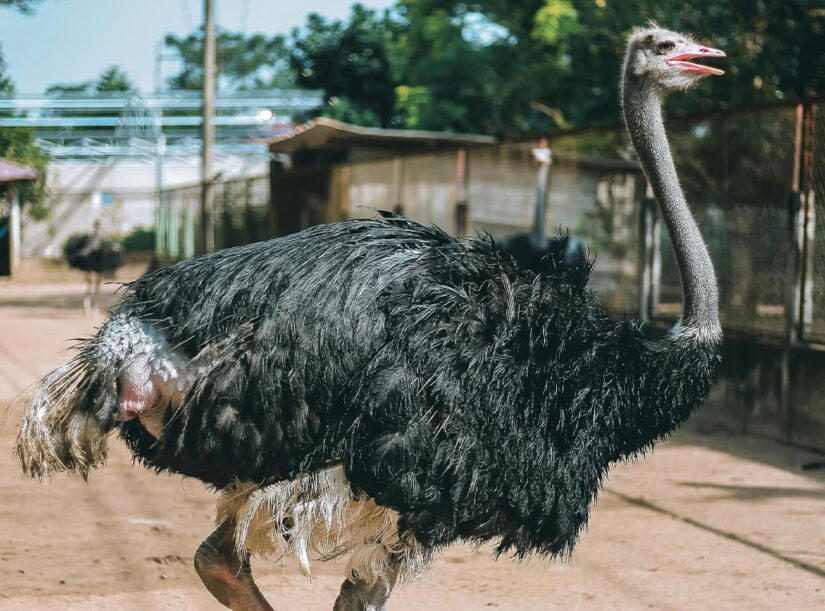Ostrich farming in America has a rich and evolving history that spans centuries, marked by periods of innovation, economic significance, and cultural fascination. Today, American ostrich farms continue to thrive, offering unique opportunities in agriculture, sustainability, and culinary exploration. In this article, we delve into the fascinating world of American ostrich farms, examining their history, farming practices, and current trends.
Historical Context
Early Beginnings
Ostrich farming in America traces its roots to the late 19th century when these majestic birds were introduced primarily for their feathers. The demand for ostrich feathers, prized for their beauty and durability, fueled a booming industry that saw farms established across the country, from California to Florida. These farms contributed significantly to the economy and cultural landscape of their respective regions, attracting tourists and investors alike.
Rise and Decline
During the early 20th century, ostrich feather fashion reached its peak, with farms in places like California’s Imperial Valley becoming major suppliers to the global market. However, the industry faced challenges, including changing fashion trends and economic downturns. By the mid-20th century, many ostrich farms in America had closed, marking a decline in the industry.
Modern Practices and Revival
Farming Techniques
Today, American ostrich farms have embraced modern farming techniques that prioritize animal welfare, sustainability, and product diversity. Farms focus not only on producing high-quality feathers but also on ostrich meat, leather, and eggs. Sustainable practices such as pasture-based grazing and organic feed are increasingly common, reflecting consumer demand for ethically produced food products.
Geographic Distribution
While California remains a hub for ostrich farming, other states such as Texas, Florida, and Nevada have also seen a resurgence in ostrich farming. These regions offer favorable climates and agricultural conditions for raising ostriches, supporting the growth of the industry across different parts of the country.
Economic Impact
The revival of ostrich farming in America has had a positive economic impact on rural communities and agricultural sectors. Farms provide employment opportunities, stimulate local economies through tourism and agricultural sales, and contribute to the diversification of the agricultural industry.
Culinary Exploration and Health Benefits
Ostrich Meat
One of the most intriguing aspects of American osterage farms is their production of ostrich meat, which is gaining popularity among health-conscious consumers and culinary enthusiasts. Ostrich meat is lean, low in fat, and high in protein, making it a nutritious alternative to traditional meats. Chefs and home cooks alike appreciate its versatility and mild flavor, using it in a variety of dishes from burgers to gourmet steaks.
Ethical Considerations
As with any form of animal agriculture, ethical considerations are important in ostrich farming. Responsible farmers prioritize the welfare of their birds, ensuring they have access to adequate space, nutrition, and veterinary care. Many farms engage in animal welfare certifications and practices that promote humane treatment and sustainable farming methods.
Future Trends and Innovations
Education and Awareness
American ostrich farms are increasingly focused on education and public outreach to raise awareness about ostrich farming practices and the benefits of ostrich products. Educational tours, farm-to-table experiences, and collaborations with chefs and local businesses help connect consumers with the farm-to-fork journey of ostrich products.
Innovation in Product Development
Innovation plays a crucial role in the evolution of American osterage farms. Farmers and entrepreneurs are exploring new uses for ostrich products, such as leather goods, cosmetics, and pharmaceutical applications. This diversification not only expands market opportunities but also promotes sustainability by utilizing all parts of the ostrich.
American ostrich farms represent a blend of tradition, innovation, and sustainability in the modern agricultural landscape. From their historical roots in ostrich feather production to their current focus on meat, eggs, and leather, these farms offer unique opportunities for economic growth, culinary exploration, and ethical farming practices. As consumer interest in sustainable and nutritious food options continues to grow, American ostrich farms are well-positioned to play a pivotal role in the future of agriculture and gastronomy.
Whether you’re curious about the history of ostrich farming, interested in exploring new culinary flavors, or passionate about supporting sustainable agriculture, American osterage farms provide a compelling story of resilience, adaptation, and agricultural ingenuity.
